Expression of insulin receptor (IR) A and B isoforms, IGF-IR, and IR/IGF-IR hybrid receptors in vascular smooth muscle cells and their role in cell migration in atherosclerosis
- PMID: 27905925
- PMCID: PMC5134076
- DOI: 10.1186/s12933-016-0477-3
Expression of insulin receptor (IR) A and B isoforms, IGF-IR, and IR/IGF-IR hybrid receptors in vascular smooth muscle cells and their role in cell migration in atherosclerosis
Abstract
Background: Abnormal proliferation and migration of vascular smooth muscle cells (VSMCs) is a major contributor to the development of atherosclerotic process. In a previous work, we demonstrated that the insulin receptor isoform A (IRA) and its association with the insulin-like growth factor-I receptor (IGF-IR) confer a proliferative advantage to VSMCs. However, the role of IR and IGF-IR in VSMC migration remains poorly understood.
Methods: Wound healing assays were performed in VSMCs bearing IR (IRLoxP+/+ VSMCs), or not (IR-/- VSMCs), expressing IRA (IRA VSMCs) or expressing IRB (IRB VSMCs). To study the role of IR isoforms and IGF-IR in experimental atherosclerosis, we used ApoE-/- mice at 8, 12, 18 and 24 weeks of age. Finally, we analyzed the mRNA expression of total IR, IRB isoform, IGF-IR and IGFs by qRT-PCR in the medial layer of human aortas.
Results: IGF-I strongly induced migration of the four cell lines through IGF-IR. In contrast, insulin and IGF-II only caused a significant increase of IRA VSMC migration which might be favored by the formation of IRA/IGF-IR receptors. Additionally, a specific IGF-IR inhibitor, picropodophyllin, completely abolished insulin- and IGF-II-induced migration in IRB, but not in IRA VSMCs. A significant increase of IRA and IGF-IR, and VSMC migration were observed in fibrous plaques from 24-week-old ApoE-/- mice. Finally, we observed a marked increase of IGF-IR, IGF-I and IGF-II in media from fatty streaks as compared with both healthy aortas and fibrolipidic lesions, favoring the ability of medial VSMCs to migrate into the intima.
Conclusions: Our data suggest that overexpression of IGF-IR or IRA isoform, as homodimers or as part of IRA/IGF-IR hybrid receptors, confers a stronger migratory capability to VSMCs as might occur in early stages of atherosclerotic process.
Keywords: Atherosclerosis; Insulin receptor; Migration; Vascular smooth muscle cells.
Figures
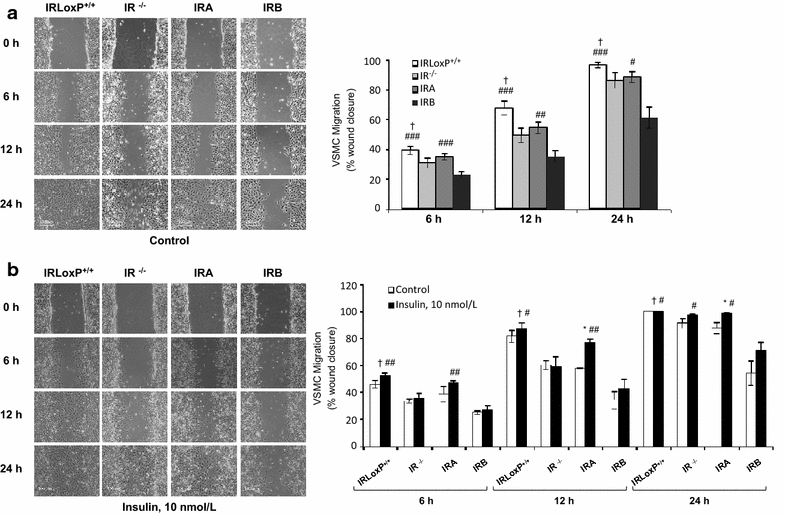
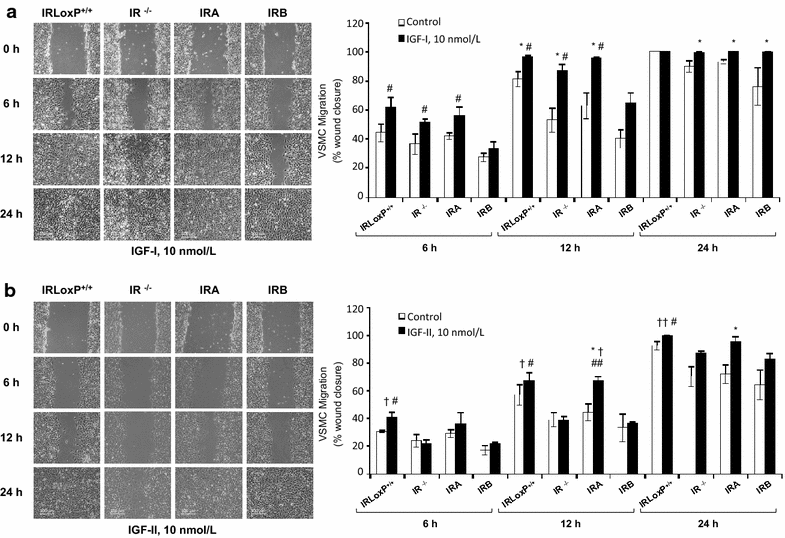
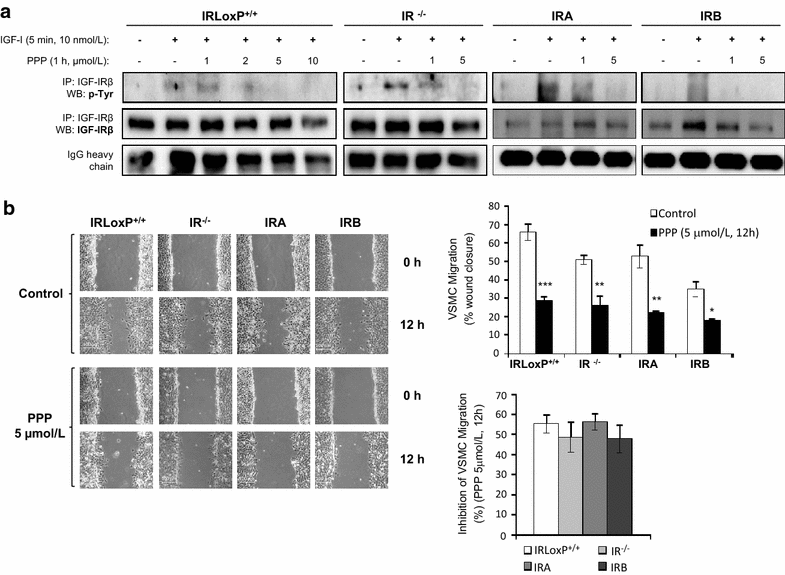
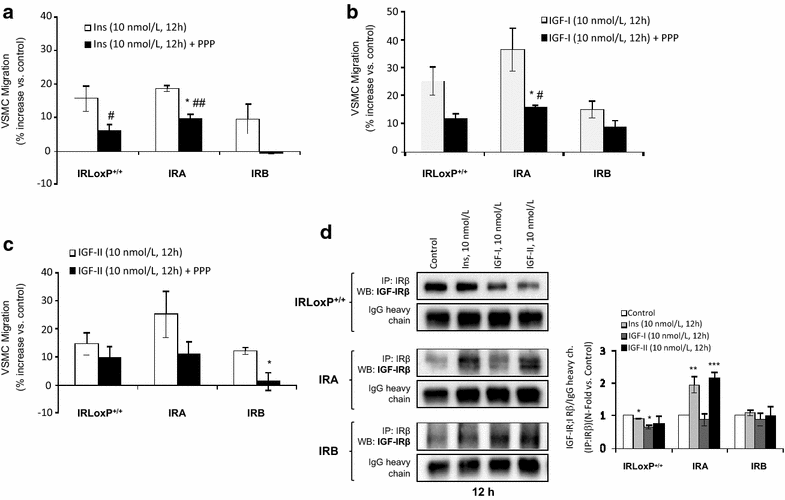

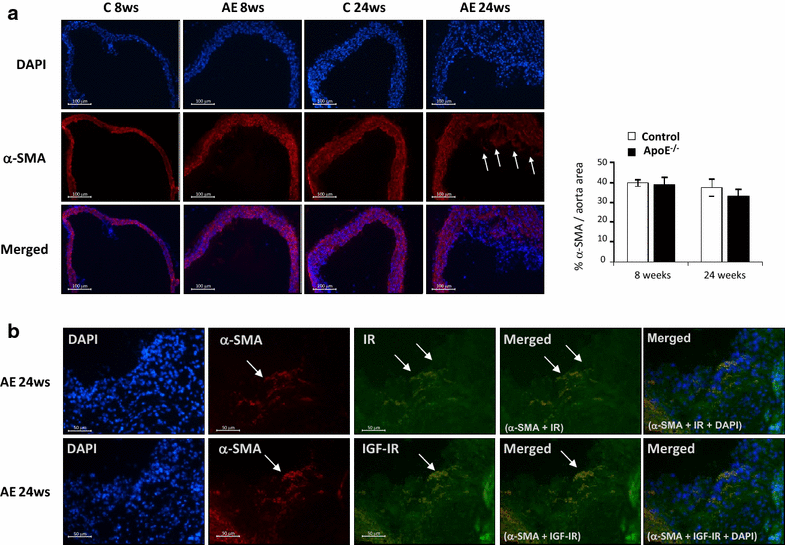
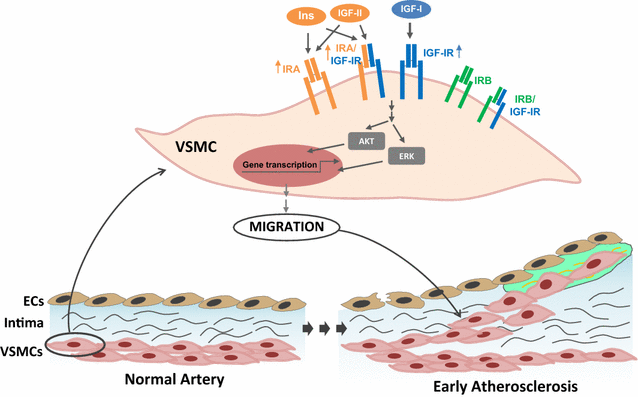
References
-
- Bornfeldt KE, Raines EW, Nakano T, Graves LM, Krebs EG, Ross R. Insulin-like growth factor-I and platelet-derived growth factor-BB induce directed migration of human arterial smooth muscle cells via signaling pathways that are distinct from those of proliferation. J Clin Invest. 1994;93:1266–1274. doi: 10.1172/JCI117081. - DOI - PMC - PubMed
Publication types
MeSH terms
Substances
LinkOut - more resources
Full Text Sources
Other Literature Sources
Medical
Miscellaneous

